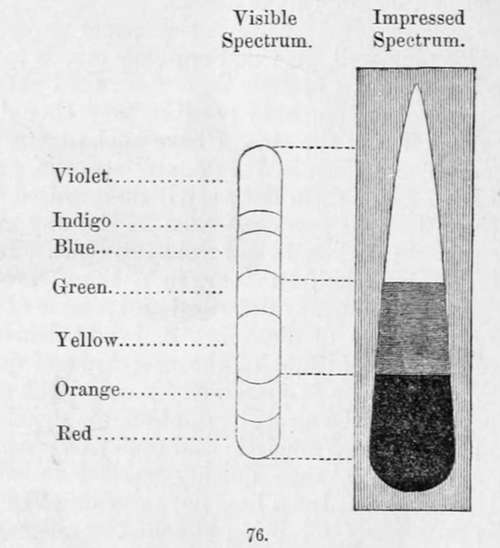The Use Of The Salts Of Iodine. Part 5
Description
This section is from the book "A Manual Of Photography", by Robert Hunt. Also available from Amazon: A Manual of Photography.
The Use Of The Salts Of Iodine. Part 5
Before quitting this branch of the art, it will be interesting to examine the modifications which have been introduced by some continental inquirers.
M. Lassaigne, who has claimed priority in the use of the iodide of potassium, saturated his paper with a sub-chloride of silver, which was allowed to assume a violet-brown colour, and it was then impregnated with the iodidated solution.
M. Bayard simply allowed ordinary letter paper, prepared according to Mr. Talbot's method, to blacken by light. He then steeped it for some seconds in a solution of iodide of potassium, and laying it on a slate he placed it in the camera.
M. Verignon introduced a somewhat more complicated process. His directions are—White paper should first be washed with water acidulated by hydrochloric (muriatic) acid; then, after being well dried, steeped in the following solution :—Water fourteen parts, with one part of a compound formed of two parts of muriate of ammonia, two parts of bromide of sodium, and one of chloride of strontium. The paper dried again is passed into a very weak solution of nitrate of silver. There is thus formed, by double decomposition, a chloride and bromide of silver, which is made to turn black by exposing the paper to the light for about half an hour. To use this paper, it is steeped in a very weak solution of the iodide of sodium, and placed, quite wet, into the camera obscura, at the proper focus. In fine weather, M. Verignon states, the effect is produced in twelve minutes. I have, however, never produced a good picture by this process in less than thirty minutes. A great objection to this mode of preparation is the very rapid deterioration of the paper: every day it will become less and less sensitive to light, and at the end of a fortnight it is useless.
The papers recommended for use in the former pages have the advantage of keeping well, provided ordinary care is taken with them. It is necessary to exclude them from the light, to keep them very dry, and, as much as possible, they should be protected from the action of the air. I have kept papers, prepared with the muriate of ammonia, baryta, and strontia, for twelve months, and have found them but very little impaired.
Dr. Schafhaeutl allows paper prepared in the way mentioned at a former page to darken in a bright sun-light. It is then macerated for at least half an hour, in a liquid prepared by mixing one part of the already described acid nitrate of mercury, with nine or ten parts of alcohol. A bright lemon yellow precipitate of basic hyponitrate of the protoxide of quicksilver falls, and the clear liquor is preserved for use. The macerated paper is removed from the alcoholic solution, and quickly drawn over the surface of diluted muriatic acid (one part strong acid to seven or ten of water), then quickly washed in water, and slightly and carefully dried at a heat not exceeding 212° of Fahr. The paper is now ready for being bleached by the rays of the sun ; and in order to fix the drawing, nothing more is required than to steep the paper a few minutes in alcohol, which dissolves the free bichloride of mercury. I must confess, however, that in my hands the process has not been so successful as it is described to have been by the author.
It is perhaps necessary to remark, that we cannot multiply designs from an original bleached photograph. The yellow colour of the paper is of itself fatal to transfers, and independently of this, the wet hydriodic solution would immediately destroy any superposed photograph.
We have seen in a former chapter that the white photographic papers are darkened by the blue, indigo, and violet rays. On the dark papers washed with the iodine salts in solution, the bleaching is effected most energetically by the violet rays : it proceeds with lessening intensity to the blue, while all the rays below the yellow have a darkening influence on the paper. This effect will be best illustrated by figure 76, in which is shown— somewhat exaggerated for the sake of distinctness—the very remarkable action which takes place : clearly establishing the fact first noticed by Wollaston, that the two extremities of the spectrum have different powers.
The remarkable manner in which the point of greatest intensity is shifted from the blue to the violet, when papers have but a very slight difference in their composition or mode of preparation, is an extremely curious point of philosophical inquiry. It will be evident from what has been said, that it is necessary the focus of the violet rays should be always chosen in using these papers in the camera.

Continue to:
- prev: The Use Of The Salts Of Iodine. Part 4
- Table of Contents
- next: Chapter X. General Remarks On The Use Of The Camera Obscura. The Photographic Pentagraph
